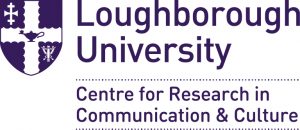
Dr Sylvia Shaw
Senior Lecturer in English Language, Middlesex University. Conducts research on language and politics and has recently published (with Deborah Cameron) ‘Gender, Power and Political Speech: Women and Language in the 2015 UK General Election’.
Email: s.k.shaw@mdx.ac.uk

Section 5: Campaign and Political Communication
- Why facts did matter in the campaign
- Less a soap opera, more a fantasy drama?
- The rhetoric of the EU Referendum campaign
- A (very) brief period of Habermasian bliss
- The toxicity of discourse: reflections on UK political culture following the EU Referendum
- Britishness and Brexit
- Neither tackling lies nor making the case: the Remain side
- Break-point for Brexit? How UKIP’s image of ‘hate’ set race discourse reeling back decades
- Referendum campaign broadcasts on television: A generational clash?
- Comedy clubs offered a better quality of debate than the political stage
- ‘Project Art’ versus ‘Project Fear’: the art establishment against Brexit
- Notes for editors: what the campaign press releases tell us about Vote Leave and Britain
Televised political debates have become a central focus of UK political campaigning. Here I consider the mechanics of the two main televised debates of the EU Referendum campaign by analysing particular aspects of turn-taking and floor apportionment in the ‘ITV Referendum Debate’ on 9th June 2016 and the ‘BBC Great Debate’ on 21st June 2016. Both debates ran for two hours with the Leave and Remain arguments represented by two teams of three speakers responding to questions from the studio audience. Apart from the more striking features of the debates, such as the repeated mantra to ‘take back control’ by the Leave side, and the speakers’ overt self-identifications as mother, grandmother, immigrant, Turk and lawyer, an analysis of debate turns can illuminate how the speakers occupied the debate floor in interactional terms.
unlike the GE2015 TV debates, these debates were a team effort
In the ITV debate there was some variability in the distribution of turns directly allocated by the moderator. As Figure 1 shows, the Leave team were allocated 83 speaking turns and the Remain team 76. Johnson was allocated the most turns overall, with Rudd second. Johnson and Rudd engaged in ‘dyadic’ or head-to-head ‘debate within a debate’ exchanges that give interactional advantages. Direct challenges and questions directed at a speaker mean that they are given more opportunities to respond and this is often sanctioned by the moderator in the interests of provoking debate. In this way, Johnson accrued turns through challenges from all the Remain speakers. However, unlike the GE2015 TV debates, these debates were a team effort, so the dominance of allocated turns by one team member automatically reduced the participation of other members of the team. In this way, Johnson’s dominance of the allocated turns was at the expense (strategically or otherwise) of the participation of Leadsom and particularly Stuart (who took the fewest turns allocated to the Leave team), and Rudd’s allocated turns were taken at the expense of Sturgeon and Eagle. However, the allocated turns only give a partial account of participation as speakers frequently interrupt each other and speak ‘illegally’, although these contested turns are less secure than those that are allocated. Figure 1 shows that the Leave team made 17 interruptions and the Remain team made 38, with Eagle making the most overall, Sturgeon and Johnson making the approximately the same amount, Rudd only five and Stuart none at all.
Of course, simply securing speaking turns is not enough to ensure a speaker’s success in creating an impression on the audience. There was very little applause in the ITV debate but 60% of it was in response to the Leave team and 40% to Remain. Johnson and Sturgeon achieved the most positive audience response, as measured in applause. Given the equal composition of the studio audience into Leave and Remain camps, and the variability of the audience responses towards members of the same ‘team’, this might suggest that it was strategically an advantage for Johnson to take most of the Leave allocated turns and a disadvantage for Rudd to take most of those allocated to Remain (as she achieved a less positive response from the audience than Sturgeon).
However, as with all TV debates, the participants must balance a range of competing demands. Although Johnson was noticeably dominant in the ITV debate, and gained the most positive audience reaction, this dominance risked him being perceived negatively as overbearing. This was highlighted by Ruth Davidson in the ‘BBC Great Debate’ when she interrupted Johnson to say ‘This isn’t the Boris show’ to highlight Johnson’s domineering style. In fact, there was far less variability in allocated turns in this debate. As Figure 2 shows, both sides in the BBC debate were allocated the same amount of turns and all three speakers for Leave took an equal share of allocated turns, possibly a tactical move enabled by the performance of a now well-rehearsed team. For Remain, it is Davidson who stands out as the speaker who gained the most turns overall.
The audience response in terms of applause in the BBC debate was also more equally distributed between the two sides, with 51.2% for the Leave team and 48.8% for Remain. Despite Davidson’s successful accrual of speaking turns, Johnson once again gained the most positive audience response with 210 seconds of applause against Davidson’s 173 seconds.
The performance of the politicians in this ‘dispute genre’ of TV political debates concurs with previous analyses of TV debates in the GE2015 election campaign. Although these strictly moderated events aim to ensure equal participation, this principle runs against an intrinsically adversarial genre that seeks to engage audiences and rewards those who both directly challenge others and who are challenged themselves.




